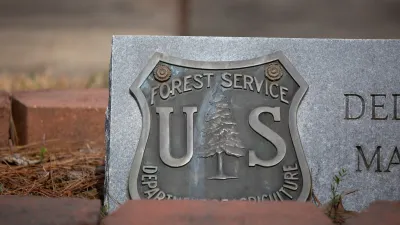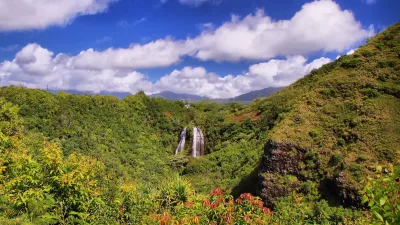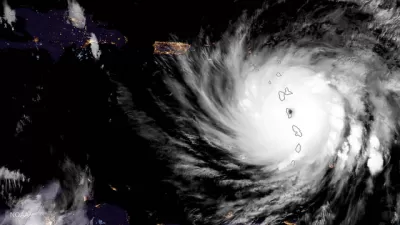Not only did Hurricane Maria destroy most of Puerto Rico's man-made infrastructure, it also defoliated the island's vast tropical forests, upsetting the forest ecology—in the short term.
"One of the most dramatic sights left by Hurricane Maria is the denuding of Puerto Rico," states NPR's John Burnett in his report (available on audio) on Puerto Rico's forest ecology. "The lush forests for which this island is famous were stripped bare by the cyclone."
Fortunately, the destruction to the forests is one of defoliation, not deforestation. The foliage will return, though, just like it did after the category 3 Hurricane Hugo devastated part of the island in September 1989.
Like the destroyed electric grid and other crucial infrastructure that will be rebuilt with help from the Army Corps of Engineers that serve the 3.4 million residents of this Caribbean island, though, it will take time, and in the near term, be disruptive, particularly to the forest's fauna. But the results are worth the wait, according to scientists who have "been studying the same forests ....since 1943," states Burnett.
Through an accident of weather and geography, Puerto Rico has perhaps the best research on the interaction between hurricanes and tropical forests in the Western Hemisphere.
"The forest is impatient to reinvent itself"
What Dr. Ariel Lugo, the 74-year-old director of the International Institute of Tropical Forestry, part of the U.S. Department of Agriculture's Forest Service and other scientists learned after Hugo defoliated the hills "is that regrowth here was two to three times as robust and productive as a normal healthy forest."
The trees race upward to regain their choice positions in the canopy and photosynthesize the sunlight. The tallest are the victors.
It took the forest three to four years to recover after Hugo, and it probably will for Maria, too.
Burnett asks Lugo what he has to say to residents who are anxious to see the island become green again.
"Unfortunately, it's the same thing they are being told when they are waiting for gas, food and water," Lugo replies. "Be patient."
FULL STORY: After Hurricane's Wrath, Puerto Rico's Green Forests Turn Bare Brown

Alabama: Trump Terminates Settlements for Black Communities Harmed By Raw Sewage
Trump deemed the landmark civil rights agreement “illegal DEI and environmental justice policy.”

Study: Maui’s Plan to Convert Vacation Rentals to Long-Term Housing Could Cause Nearly $1 Billion Economic Loss
The plan would reduce visitor accommodation by 25% resulting in 1,900 jobs lost.

Planetizen Federal Action Tracker
A weekly monitor of how Trump’s orders and actions are impacting planners and planning in America.

Waymo Gets Permission to Map SF’s Market Street
If allowed to operate on the traffic-restricted street, Waymo’s autonomous taxis would have a leg up over ride-hailing competitors — and counter the city’s efforts to grow bike and pedestrian on the thoroughfare.

Parklet Symposium Highlights the Success of Shared Spaces
Parklets got a boost during the Covid-19 pandemic, when the concept was translated to outdoor dining programs that offered restaurants a lifeline during the shutdown.

Federal Homelessness Agency Places Entire Staff on Leave
The U.S. Interagency Council on Homelessness is the only federal agency dedicated to preventing and ending homelessness.
Urban Design for Planners 1: Software Tools
This six-course series explores essential urban design concepts using open source software and equips planners with the tools they need to participate fully in the urban design process.
Planning for Universal Design
Learn the tools for implementing Universal Design in planning regulations.
Caltrans
Smith Gee Studio
Institute for Housing and Urban Development Studies (IHS)
City of Grandview
Harvard GSD Executive Education
Toledo-Lucas County Plan Commissions
Salt Lake City
NYU Wagner Graduate School of Public Service





























